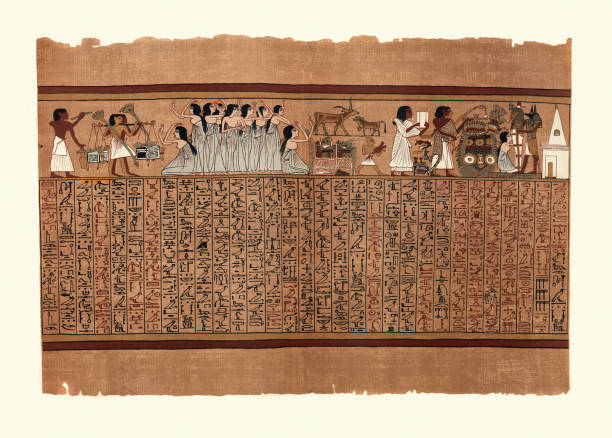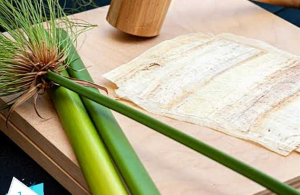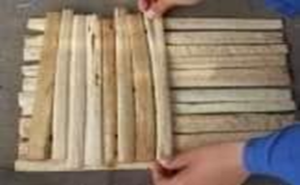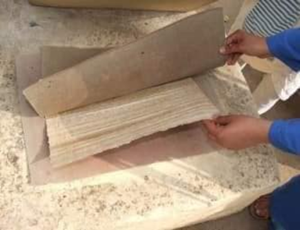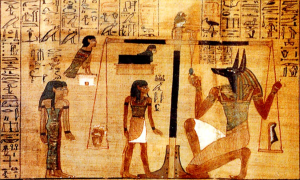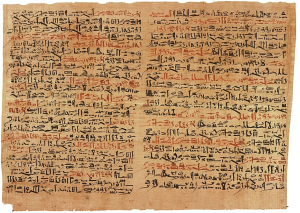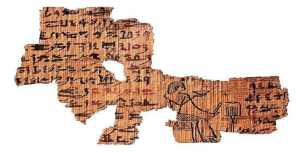Papyrus Plant
Papyrus is considered the greatest Egyptian brand in the world until now. The word papyrus is derived from the ancient Egyptian word “paupera,” meaning ” the belonging to the palace,” because it was initially cultivated in royal palaces. The Greeks called papyrus “papyrus,” by which it is still known today. The English word “paper” was derived from the name “papyrus.” It exists today in all languages as “paper.”
Papyrus in the Ancient World
Papyrus is considered an unparalleled Egyptian invention in the ancient world. Ancient Egyptians used to write on stone. Due to the difficulty of correcting writing errors on stone, ancient Egyptians began to use the papyrus plant and made paper from it. Papyrus was used as an easier way to write. Some words on papyrus could be corrected. Ancient Egyptians spread this wonderful product and exported it to all parts of the world. There is a port in Lebanon called Byblos, derived from the word “papyrus.” The port of Byblos used to receive papyrus from Egypt and then re-export it to the rest of the Mediterranean countries.
The Papyrus Plant
The papyrus plant is an aquatic plant that used to grow in the marshes of the delta. It has become the botanical symbol of the northern region of Egypt (the delta) since pre-dynastic times. One of the most important uses of papyrus was in the manufacture of paper, baskets, and mats. Some Nile molds were made from papyrus.
How to Make Papyrus Paper
Some historians have mentioned that the manufacturing steps were as follows: 1.The stem is cut into small pieces from which strips are extracted and arranged side by side. 2.Another set of strips is placed perpendicularly on top of it. 3.They are soaked in Nile water and then dried in the sun. 4.The strips are then hammered with a wooden mallet. 5.The paper is placed in a small press to bond the strips together. It is worth mentioning that the strips were prepared after removing the outer skin.
The Most Important Depictions of Papyrus Making
Despite the existence of thousands of papyri that depicted ancient Egyptian life, we have only identified one scene in a noble’s tomb in Deir el-Medina from the Twelfth Dynasty in Luxor that shows the process of papyrus making. The scene depicts two men in a papyrus boat in a marsh. One of them is uprooting papyrus reeds while the other is tying the uprooted reeds into bundles. There is a depiction of a third person transferring the bundles to another person. There is a man who is preparing the papyrus stems, cleaning and preparing them for paper making. We see the man holding the end of a papyrus stem to pluck the flower from it. Then he removes the outer skin and begins to cut it into small strips.
Important Papyri
1.Edwin Smith Papyrus: Among the thousands of important papyri found, the Edwin Smith Papyrus stands out. It is considered the oldest surviving surgical document in the world. Written around 1600 BC in hieratic script (one of the types of ancient Egyptian writing along with hieroglyphics), the papyrus contains descriptions, diagnoses, and treatments for more than 48 medical problems. The papyrus was translated in 1930 AD. We find in the papyrus the most important prescribed treatments such as: •Suture of wounds •Prevention and treatment of infection using honey •Stopping bleeding using raw meat •Treatment of spinal cord injuries 2.Ebers Papyrus: It is considered the most important reference for internal medicine, eye diseases, skin diseases, heart and blood vessel diseases, as well as women’s and childbirth diseases. The papyrus dates back to the reign of King Amenhotep I (Eighteenth Dynasty). 3.Turin Papyrus: It is considered one of the most important references when writing the history of ancient Egypt. Written in hieratic script in the era of the 19th Dynasty, it recorded the names of kings and the duration of each king’s reign in years, months, and days. It is located in the Turin Museum in Italy.
Other Important Topics Found on Papyrus
Papyrus contained records of all aspects of everyday Egyptian life, including: 1.Commercial contracts 2.Marriage, divorce, and inheritance 3.Literature and poetry 4.Engineering and architectural papyri 5.Medical papyri 6.Historical documents of wars in which the ancient Egyptian kings participated

